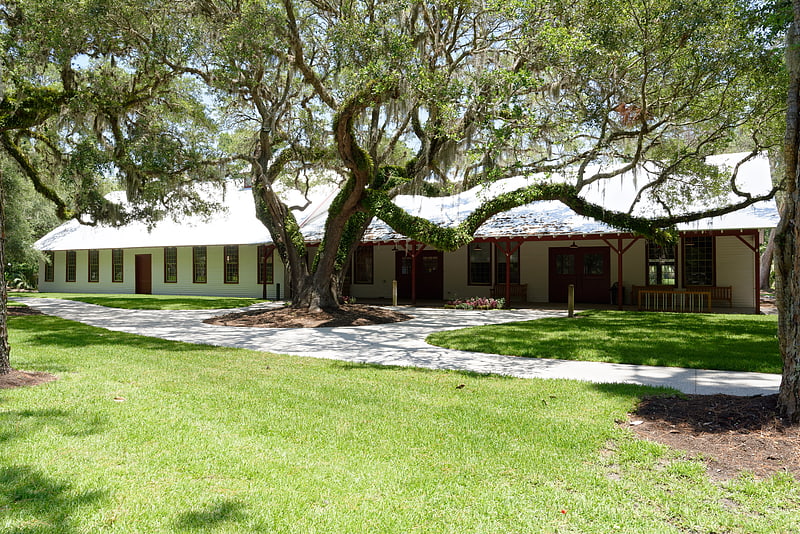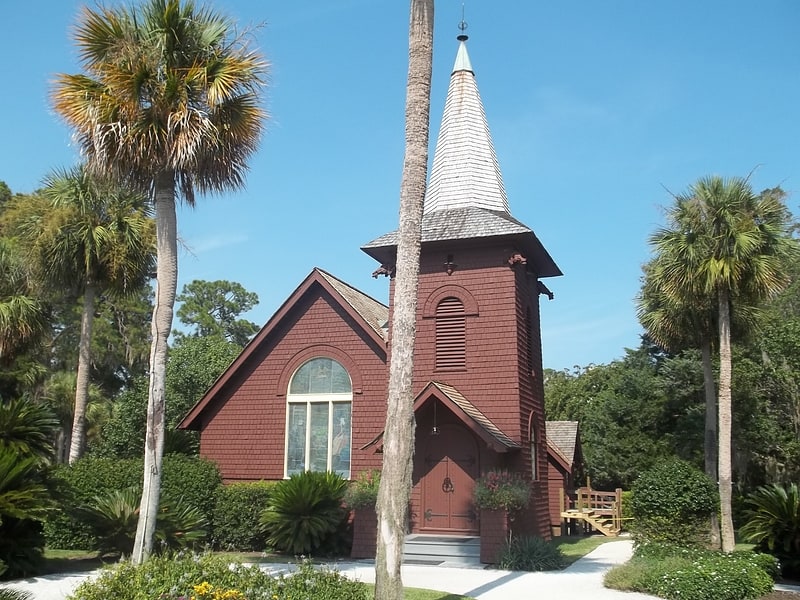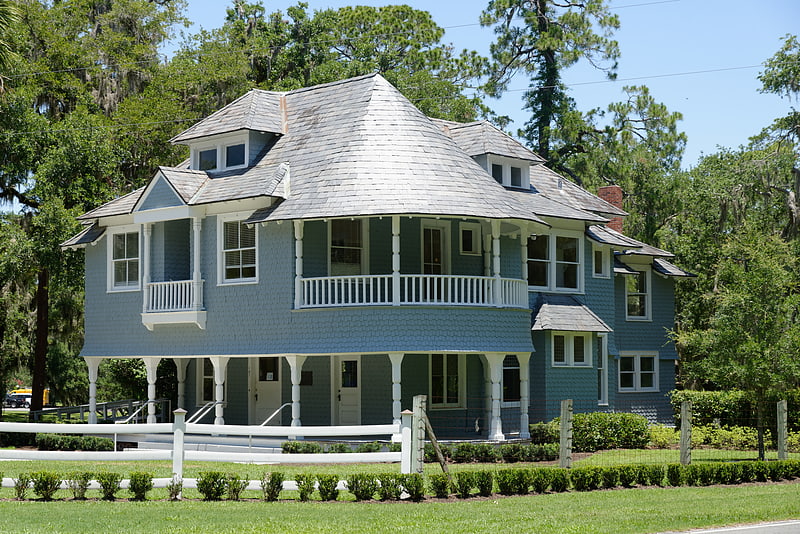Discover 5 hidden attractions, cool sights, and unusual things to do in Jekyll Island (United States). Don't miss out on these must-see attractions: Jekyll Island Museum, Indian Mound Cottage, and Faith Chapel. Also, be sure to include Walter Rogers Furness Cottage in your itinerary.
Below, you can find the list of the most amazing places you should visit in Jekyll Island (Georgia).
Table of Contents
Jekyll Island Museum

The MOSAIC is a history museum in the historic district of Jekyll Island of Georgia, in the United States.
The historic Club Stables, located on Stable Road, is now the home of the Jekyll Island Museum. This historic building was renovated by Weber Group, Inc. and Main Street Design in 2018, and re-opened spring of 2019. The museum features more exhibit space, more artifacts, a new outdoor classroom, and a new multi-purpose room. Constructed completely within the current footprint of the historic stables building, the new design highlights the building’s construction with high, lofted ceilings and open space.
The museum serves as a gateway for daily tours of Jekyll Island’s 90-acre (360,000 m2) National Historic Landmark District, including the restored Indian Mound Cottage, a 25-room mansion, and the historic remains of Horton House. The Historic District includes the Jekyll Island Clubhouse (now the Jekyll Island Club Hotel, a fully functional and award-winning four-star historic hotel), 11 cottages, the historic wharf (now a seafood restaurant), the historic power plant (now the Georgia Sea Turtle Center), club-era employee housing and a shopping area consisting of numerous historic buildings once used during the club-era.[1]
Address: 100 Stable Road, Jekyll Island
Indian Mound Cottage

Museum in the Glynn County, Georgia. The Rockefeller Cottage, also known as Indian Mound Cottage, is a house on Jekyll Island, Georgia. It is next to the Jekyll Island Club. It stands three stories high, and has a total of 25 rooms. There are nine bedrooms, nine bathrooms, and seven servant rooms. The house has many distinguishing features such as an elevator, a cedar-lined walk-in safe, and taps for hot and cold salt water on the bathtub in the master bedroom bath. Tours of the mansion are provided by the Jekyll Island Museum.[2]
Faith Chapel

Chapel in Jekyll Island, Georgia. Faith Chapel is a historic chapel on Old Plantation Road in Jekyll Island, Georgia and was built in 1904. It was used as a non-denominational chapel until 1942. The state of Georgia purchased it along with Jekyll Island in 1947. It is administered by the Jekyll Island State Park Authority and was opened to the public in 1970. It has a wood "A" frame and a brick foundation. The interior and exterior walls are shingled, with gargoyles that are replicas of the ones at Notre Dame Cathedral. The chapel was added to the National Register of Historic Places in 1971 and it is open to the public.
It has stained-glass windows. One is "David's Window" which was made by Louis Comfort Tiffany; the other is "The Adoration of the Christ Child" by Maitland Armstrong and his daughter, Helen Maitland Armstrong.[3]
Walter Rogers Furness Cottage

Building. Walter Rogers Furness Cottage – also known as the "Old Infirmary" or the "Jekyll Island Infirmary" – is a Shingle Style building on Jekyll Island, in Glynn County, Georgia.
It is one of thirty-three contributing properties in the 240-acre (97.1 hectares) Jekyll Island Club Historic District. The district was added to the National Register of Historic Places in 1972, and designated a National Historic Landmark District in 1978.[4]
Horton House

Cemetery. Horton House is a historic site on Riverview Drive in Jekyll Island, Georgia.
The tabby house was originally constructed in 1743 by Major William Horton, a top military aide to General James Oglethorpe. Horton also brewed beer in Georgia's first brewery (the ruins of which are a few hundred yards down the road). This structure has been meticulously preserved over the past 100 years as an example of coastal Georgia building techniques and as one of the oldest surviving buildings in the state.
Across the street from the Horton House ruins is the du Bignon cemetery, a tabby wall surrounding the graves of five people: Ann Amelia du Bignon, Joseph du Bignon, Marie Felicite Riffault, Hector deLiyannis, and George Harvey. Horton House, the Brewery Ruins, and the cemetery were added to the National Register of Historic Places in 1971.[5]